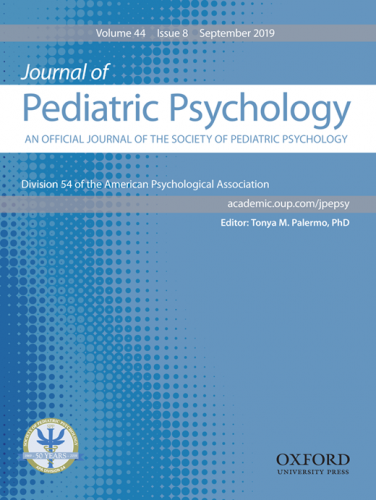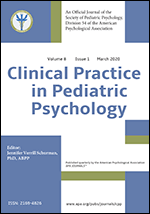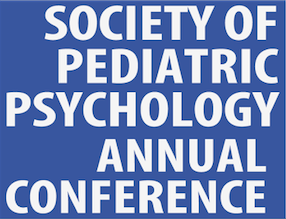Assessment Resource Sheet : Obesity
The following list of measures was compiled by the Assessment/Measurement Committee of the Obesity Special interest Group of Div. 54. Our review yielded measures assessing three specific domains: quality of life, eating habits and peer relationships. All measures are classified as well-established, approaching well-established or promising based on criteria outlined by Cohen, La Greca, Blount, Kazak, Holmbeck, & Lemanek (2008). When available, age ranges for measures are provided. Key references for each measure are provided in the references section. Please note: We have limited our attention to measures specific to pediatric obesity assessment while excluding many measures of a more general nature, which may be used in pediatric obesity assessment. For example, although measures of parental feeding practices are salient to obesity assessment, they are not explicitly designed to assess psychological constructs among youth with obesity. Similarly, although assessment of physical activity is related to obesity, we do not review these numerous measures because they are not designed for assessment of obesity specifically and they are reviewed thoroughly elsewhere (e.g., National Collaborative on Childhood Obesity Research’s Measures Registry Resources).
|
Assessment |
Well-established |
Approaching |
Promising |
|
Quality of life |
|||
|
IWQOL-Kids1,2 (ages 11–19; Kolotkin et al., 2006; Modi & Zeller, 2011) |
X |
|
|
|
Sizing Me Up3 (ages 5–13; Zeller & Modi, 2009) |
X |
|
|
|
Sizing Them Up4 (Parent Report, child ages 5–13; Modi & Zeller, 2008) |
|
X |
|
|
Youth Quality of Life Instrument – Weight Module5,6 (ages 11–18; Morales, Edwards, Flores, Barr, & Patrick, 2011; Patrick et al., 2011) |
|
|
X |
|
Eating Habits |
|||
|
Eating Disorders Examination Questionnaire EDE–Q7,8 (Carter, Stewart, & Fairburn, 2001; Luce & Crowther, 1999) |
X |
|
|
|
The Emotional Eating Scale – Adapted for Children and Adolescents9,10 (ages 8–17; Tanofsky-Kraff et al., 2007; Vannucci et al., 2012) |
X |
|
|
|
The Eating in the Absence of Hunger Questionnaire for Children and Adolescents11,12 (ages 6–19; Parent and Self Report; Madowitz et al., 2014; Tanofsky-Kraff et al., 2008) |
X |
|
|
|
Questionnaire of Eating and Weight Patterns – Adolescent13 (ages 10–18; Johnson, Grieve, Adams, & Sandy, 1999) |
X |
|
|
|
Questionnaire of Eating and Weight Patterns – Parent13,14 (Johnson et al., 1999; Celio, 2004) |
X |
|
|
Cohen, L. L., La Greca, A. M., Blount, R. L., Kazak, A. E., Holmbeck, G. N., & Lemanek, K. L. (2008). Introduction to special issue: Evidence-based assessment in pediatric psychology. Journal of Pediatric Psychology, 33(9), 911-915.
1. Kolotkin, R. L., Zeller, M., Modi, A. C., Samsa, G. P., Quinlan, N. P., Yanovski, J. A., et al. (2006). Assessing weight?related quality of life in adolescents. Obesity, 14(3), 448-457.
2. Modi, A. C., & Zeller, M. H. (2011). The IWQOL-Kids: Establishing minimal clinically important difference scores and test-retest reliability. International Journal of Pediatric Obesity, 6(2-2), e94-e96.
3. Zeller, M. H., & Modi, A. C. (2009). Development and initial validation of an obesity?specific quality?of?life measure for children: Sizing me up. Obesity, 17(6), 1171-1177.
4. Modi, A. C., & Zeller, M. H. (2008). Validation of a parent?proxy, obesity?specific quality?of?life measure: Sizing them up. Obesity, 16(12), 2624-2633.
5. Morales, L. S., Edwards, T. C., Flores, Y., Barr, L., & Patrick, D. L. (2011). Measurement properties of a multicultural weight specific quality-of-life instrument for children and adolescents. Quality of Life Research, 20(2), 215-224.
6. Patrick, D. L., Skalicky, A. M., Edwards, T. C., Kuniyuki, A., Morales, L. S., Leng, M., & Kirschenbaum, D. S. (2011). Weight loss and changes in generic and weight-specific quality of life in obese adolescents. Quality of Life Research, 20(6), 961-968.
7. Carter, J. C., Stewart, D. A., & Fairburn, C. G. (2001). Eating Disorder Examination Questionnaire: Norms for young adolescent girls. Behaviour Research and Therapy, 39(5), 625-632.
8. Luce, K. H., & Crowther, J. H. (1999). The reliability of the Eating Disorder Examination - Self-report Questionnaire version (EDE-Q). Journal of Eating Disorders, 25(3), 349-351.
9. Tanofsky?Kraff, M., Theim, K. R., Yanovski, S. Z., Bassett, A. M., Burns, N. P., Ranzenhofer, L. M., et al. (2007). Validation of the Emotional Eating Scale adapted for use in children and adolescents (EES?C). International Journal of Eating Disorders, 40(3), 232-240.
10. Vannucci, A., Tanofsky-Kraff, M., Shomaker, L. B., Ranzenhofer, L. M., Matheson, B. E., Cassidy, O. L., et al. (2012). Construct validity of the Emotional Eating Scale adapted for children and adolescents. International Journal of Obesity, 36(7), 938-943.
11. Madowitz, J., Liang, J., Peterson, C. B., Rydell, S., Zucker, N. L., Tanofsky-Kraff, M., et al. (2014). Concurrent and convergent validity of the Eating in the Absence of Hunger Questionnaire and behavioral paradigm in overweight children. International Journal of Eating Disorders, 47(3), 287-295.
12. Tanofsky-Kraff, M., Ranzenhofer, L. M., Yanovski, S. Z., Schvey, N. A., Faith, M., Gustafson, J., & Yanovski, J. A. (2008). Psychometric properties of a new questionnaire to assess eating in the absence of hunger in children and adolescents. Appetite, 51(1), 148-155.
13.Johnson, W. G., Grieve, F. G., Adams, C. D., & Sandy, J. (1999). Measuring binge eating in adolescents: Adolescent and parent versions of the questionnaire of eating and weight patterns. International Journal of Eating Disorders, 26(3), 301-314.
14. Celio, A. A., Wilfley, D. E., Crow, S. J., Mitchell, J., & Walsh, B. T. (2004). A comparison of the Binge Eating Scale, Questionnaire for Eating and Weight Patterns-Revised, and Eating Disorder Examination Questionnaire with instructions with the Eating Disorder Examination in the assessment of binge eating disorder and its symptoms. The International Journal of Eating Disorders, 36(4), 434-444.



